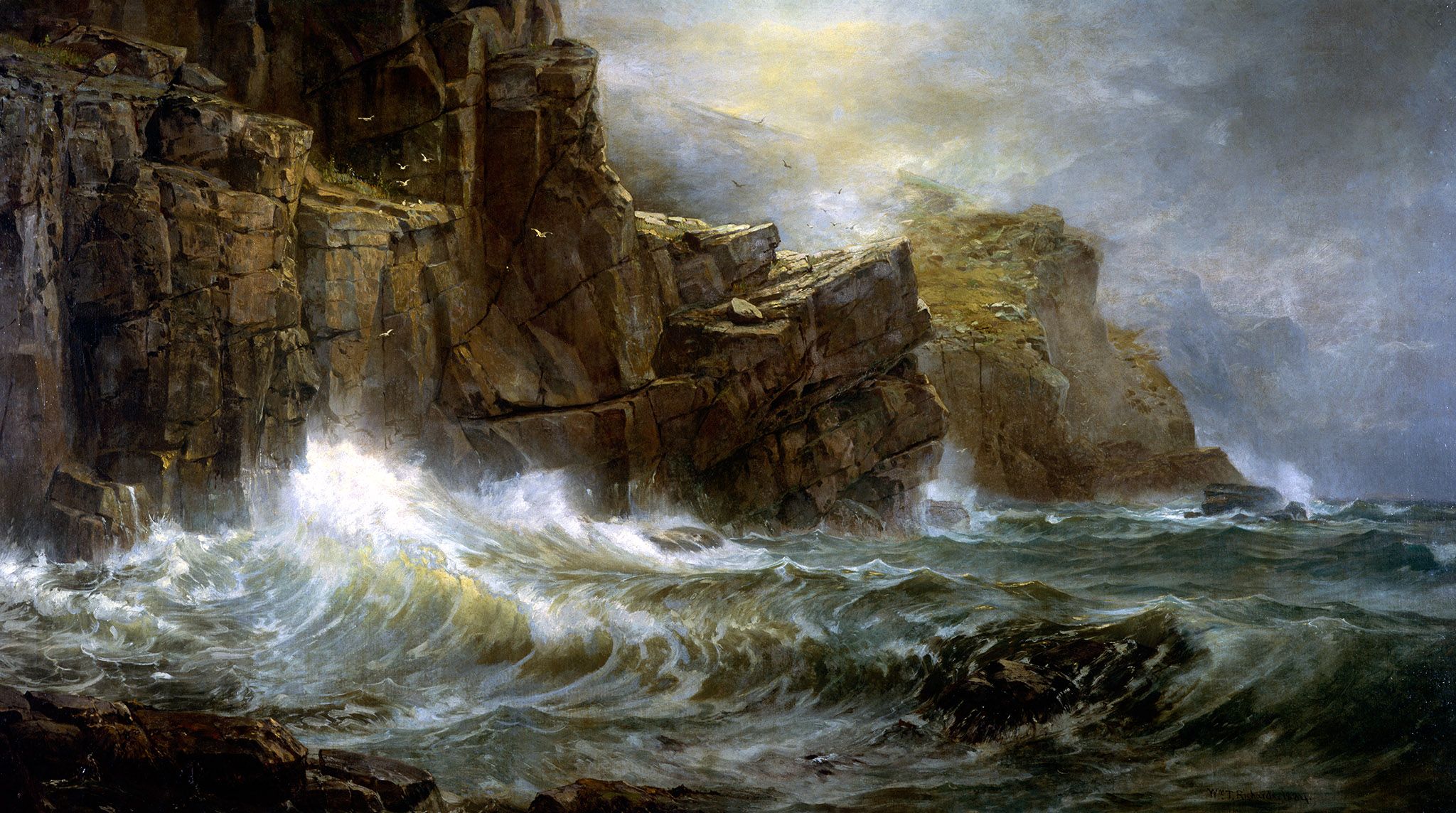
“On the Coast, through the Action of the sea and of frost; the rocks have been worn into the most fantastic shapes and the color is peculiar to the ‘serpentine’ of this district . . . The whole coast has a dark and tragic character….” – William Trost Richards
Roaring waves pound against the base of a cliff with such power and ferocity that they can be heard far from the cliff’s edge. Golden rays of light kiss the rocks and illuminate the swirling mist that blows off the sea and obscures the view of the continuing coast. This moment, this scenery, this place has an otherworldly feeling to it. And there’s even more to this than we realize.
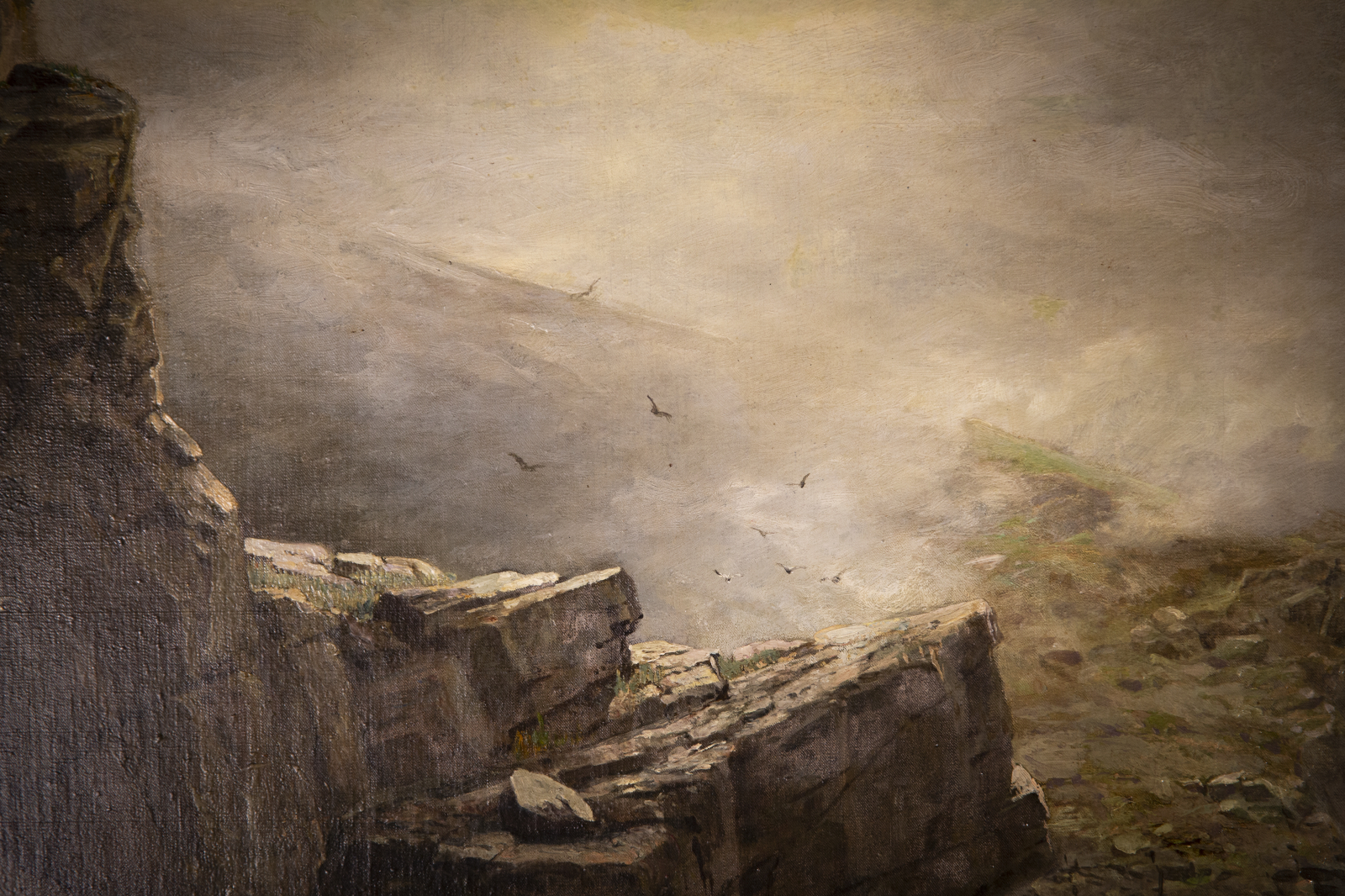
An Enchanted Place
I love Cornwall, and I don’t mean that in a passive “oh yeah it’s a cool place” kind of way, I mean… I LOVE Cornwall, like. Obsessed. I’ve been so privileged to have traveled there a few times. When I first saw this piece, before even learning the title, I said “Gosh, that looks JUST like Cornwall” – and I knew, because it has a magic to it – one with which the artist has managed to capture and enchant this piece. And these cliffs – these cliffs are burned into my mind because they, too, are unique and magical. But that mystique is not without its darkness.
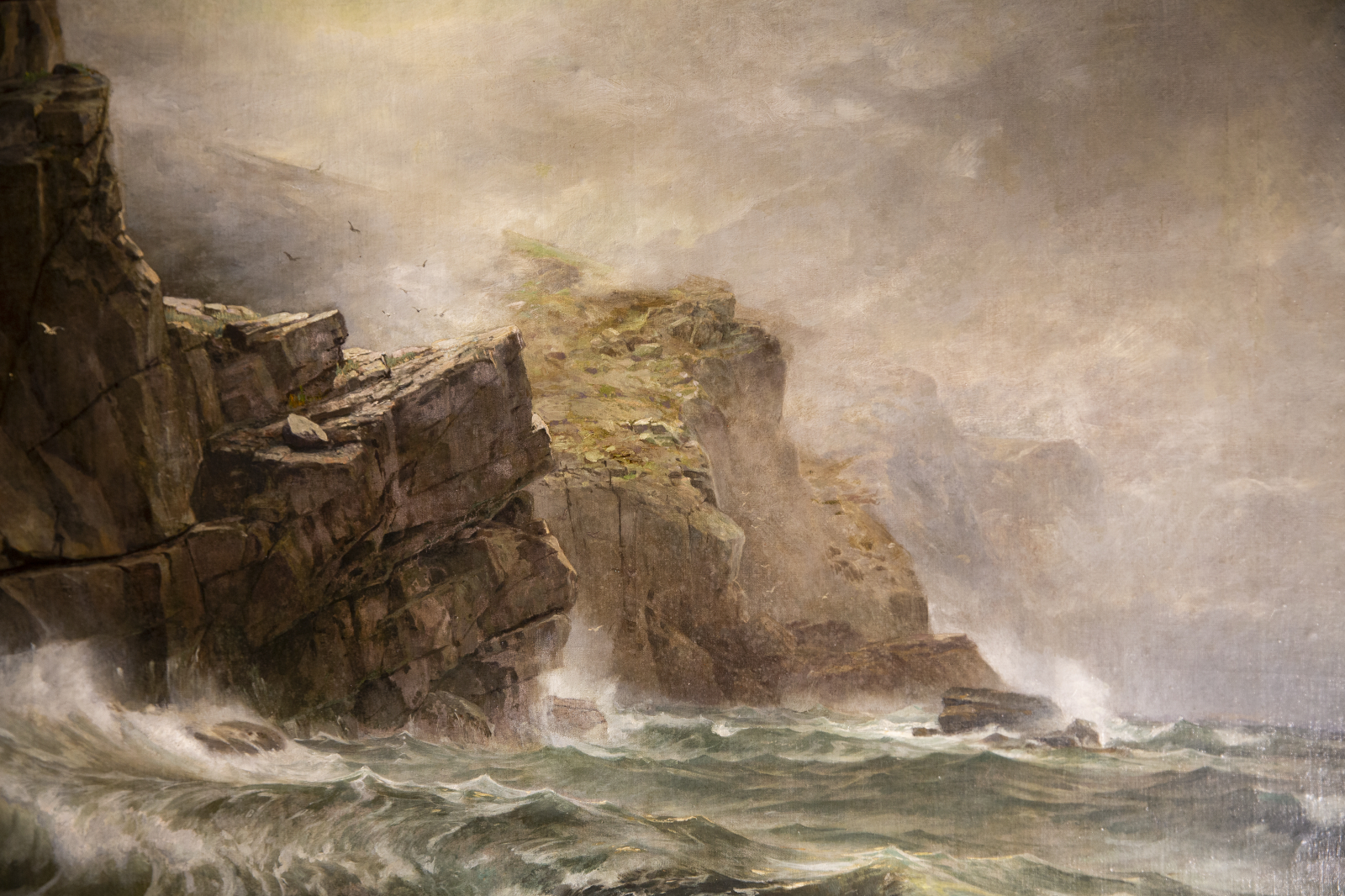
The roar is hypnotizing, the sea draws you towards the cliff’s edge with this inescapable pull that you simply can’t – or don’t – want to fight. The windblown scenery of the land is peaceful and serene and you look out at the sea and suddenly you stop – you’ve drifted to the edge. You look down the cliff face and watch those waves battering against the rocks and there seems to be nothing in this world that can rival the power with which they pound. And yet that force continues to pull, as if something is calling you from just below the surface of the water – but what is it?
A Dark and Tragic Character
“A dark and tragic character” is right – and Richards has perfectly captured this liminal moment, this place where the story book scenery of the land drops off and meets the brutal waves.
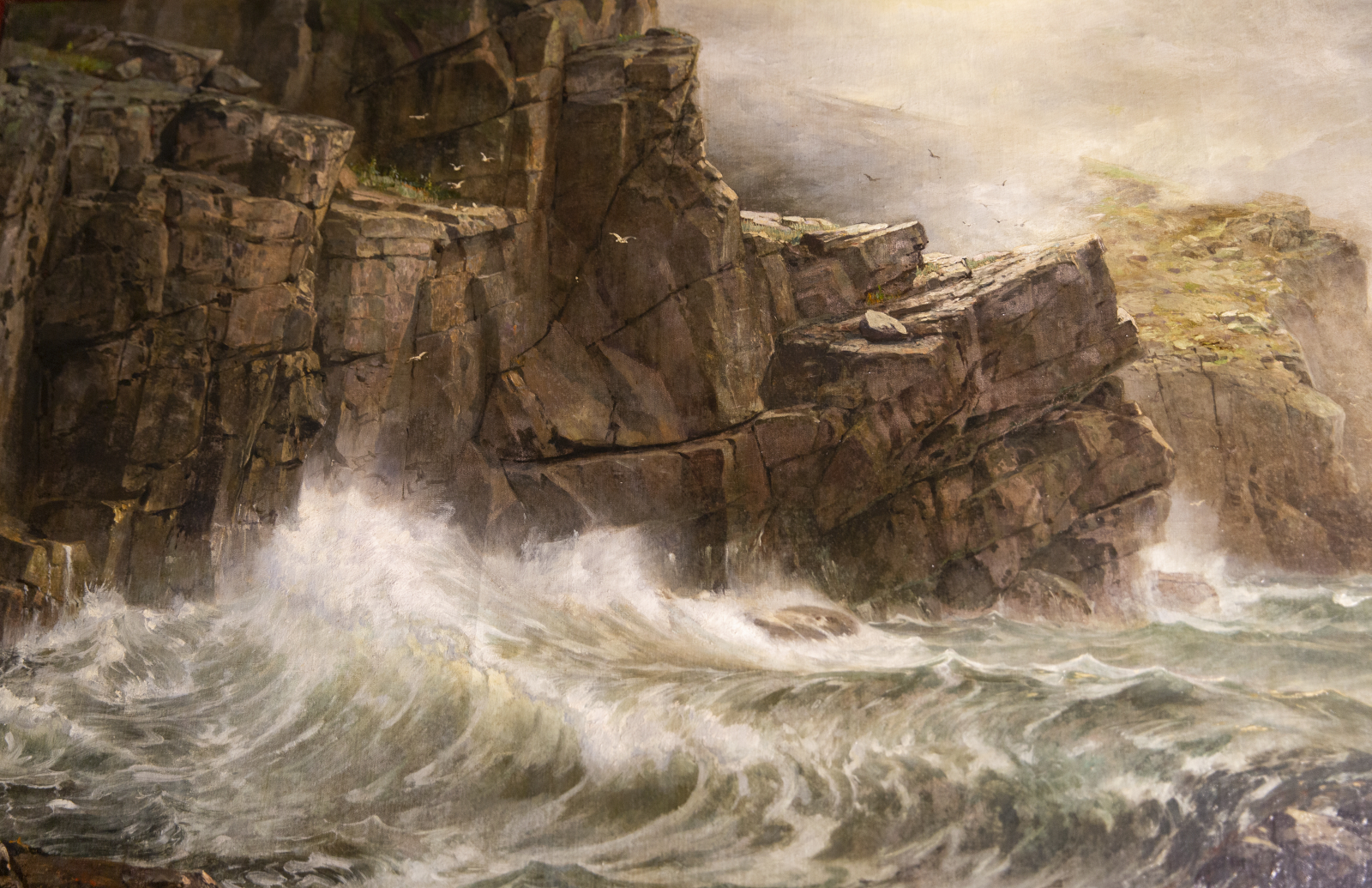
This 1884 oil on canvas simply titled “Coast of Cornwall” by William Trost Richards, captures this complex moment where sea meets shore. In this seascape, there are no people, no ships, no record of time to detract from this moment. Richards sought to share the magic of the meeting of sea and shore with the world through his paintings. He painted seascapes of many countries including the US, and his works are cherished across the world. But he didn’t start off painting primarily seascapes and littoral scenes which are scenes relating to the shoreline of a body of water. He began traveling as a young man and worked in landscapes for many years during his adventures.
The Change
That is, until he and his family returned from a trip to Europe in 1867. On the final leg of their journey, while traveling onboard the side wheel steamer, Fulton, they encountered a storm and nearly floundered.
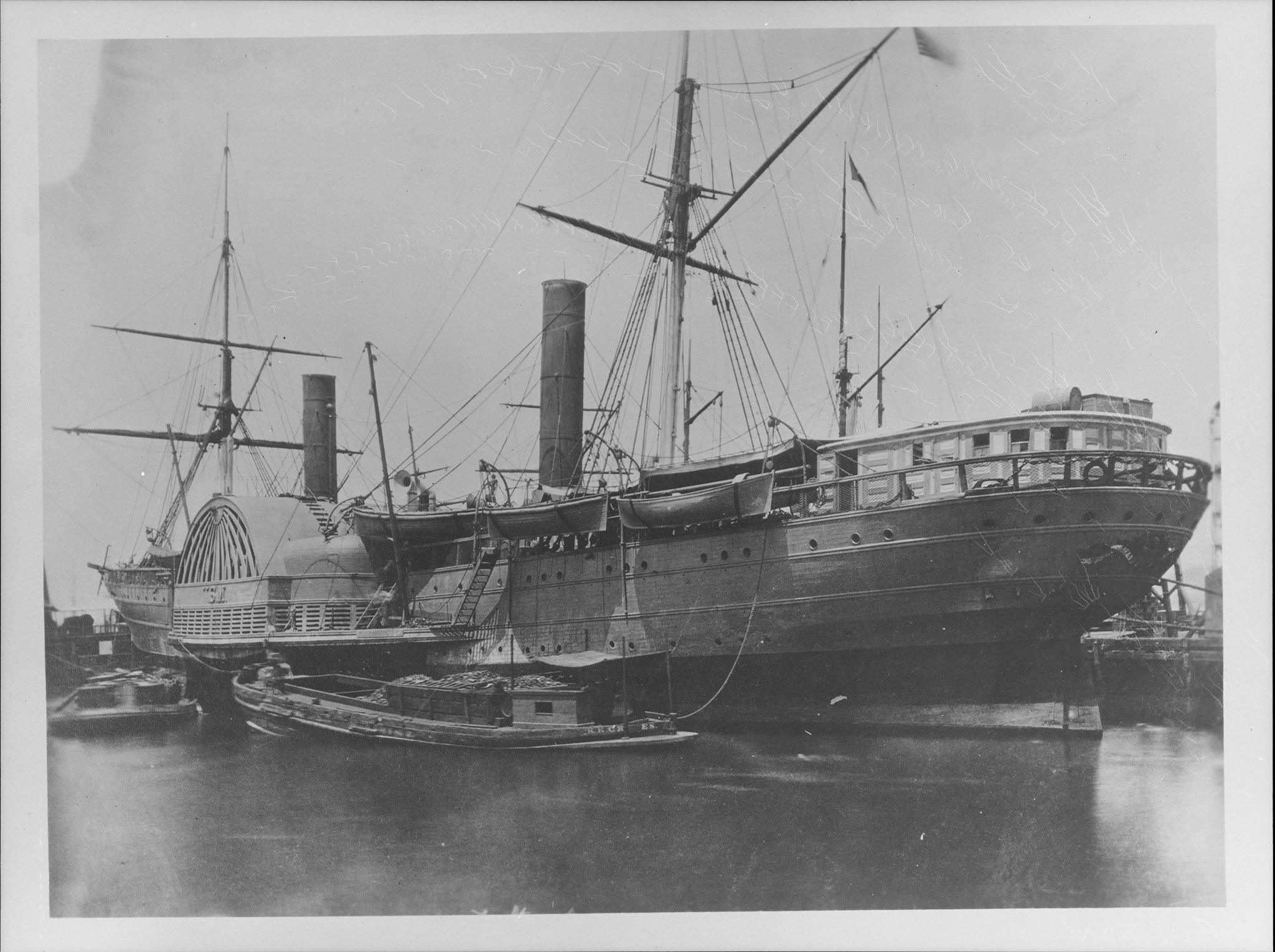
Richards and his family experienced the dark and tragic character of the sea, they felt its unyielding power first-hand, and luckily the ship and its passengers escaped unscathed. In that moment, William Trost Richards faced a beautiful, yet harrowing power that changed him forever. It changed his work, his subject matter, and enhanced it, sparking that obsession with the water.
The curl of the breaking wave in the foreground is illuminated and given life by the golden glow, seemingly radiating from within.
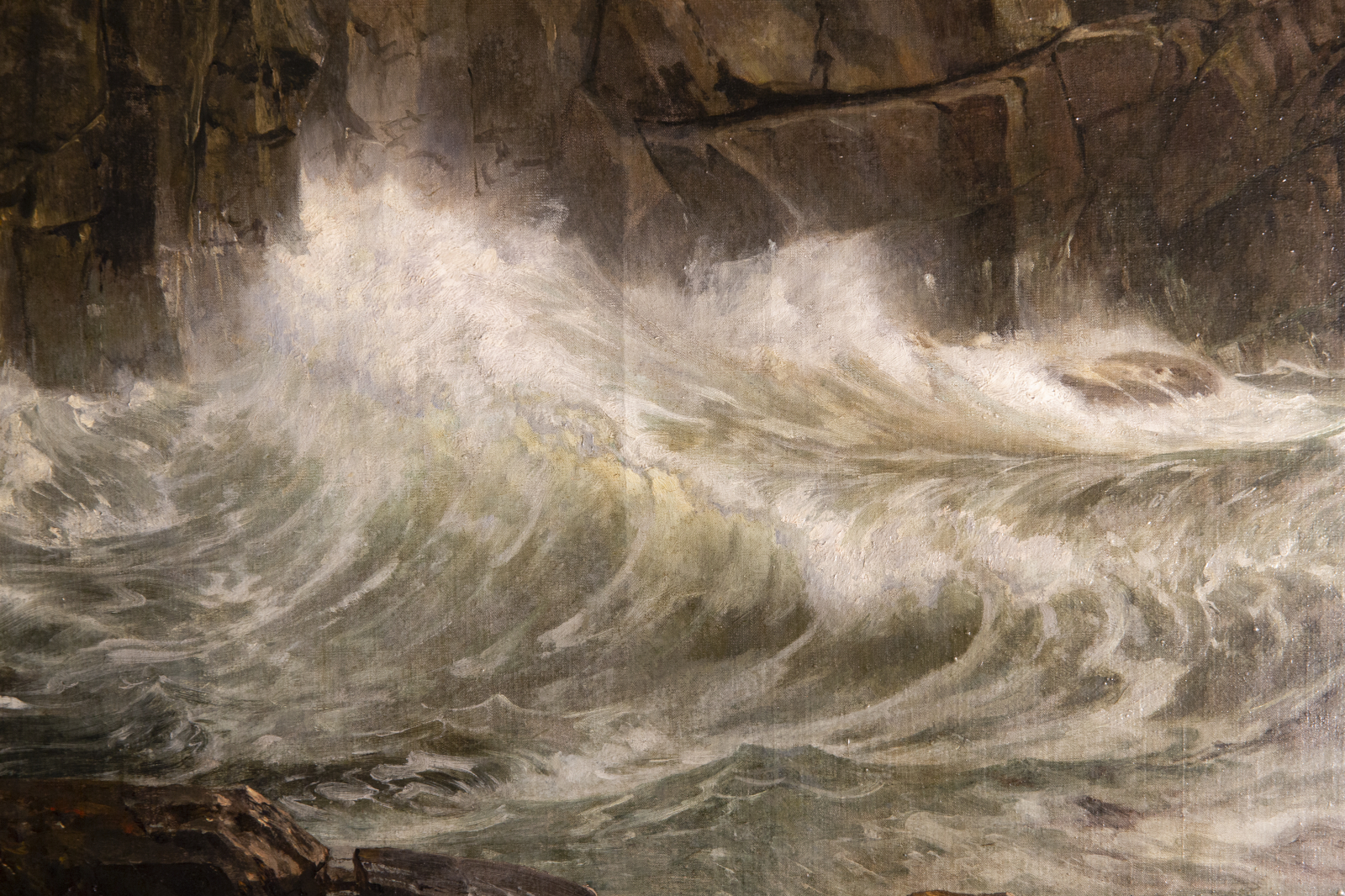
But then just as quickly as our eye is drawn to that illumination, as quickly as a wave breaks against the shore, our eyes are then drawn along the crest of the wave off the canvas into the dark and foreboding sea.
The Magic of the Water
The way that Richards painted this scene is perfect, almost too perfect. Not in a false or idealized way, but in the way that you see something with your own eyes that perhaps can’t translate through a photograph. He was obsessed with using paint to portray truth, but also something so much more – the emotion, the power, the incredible magic that is in the world around us, especially the water. One of Richards’ sons once said,
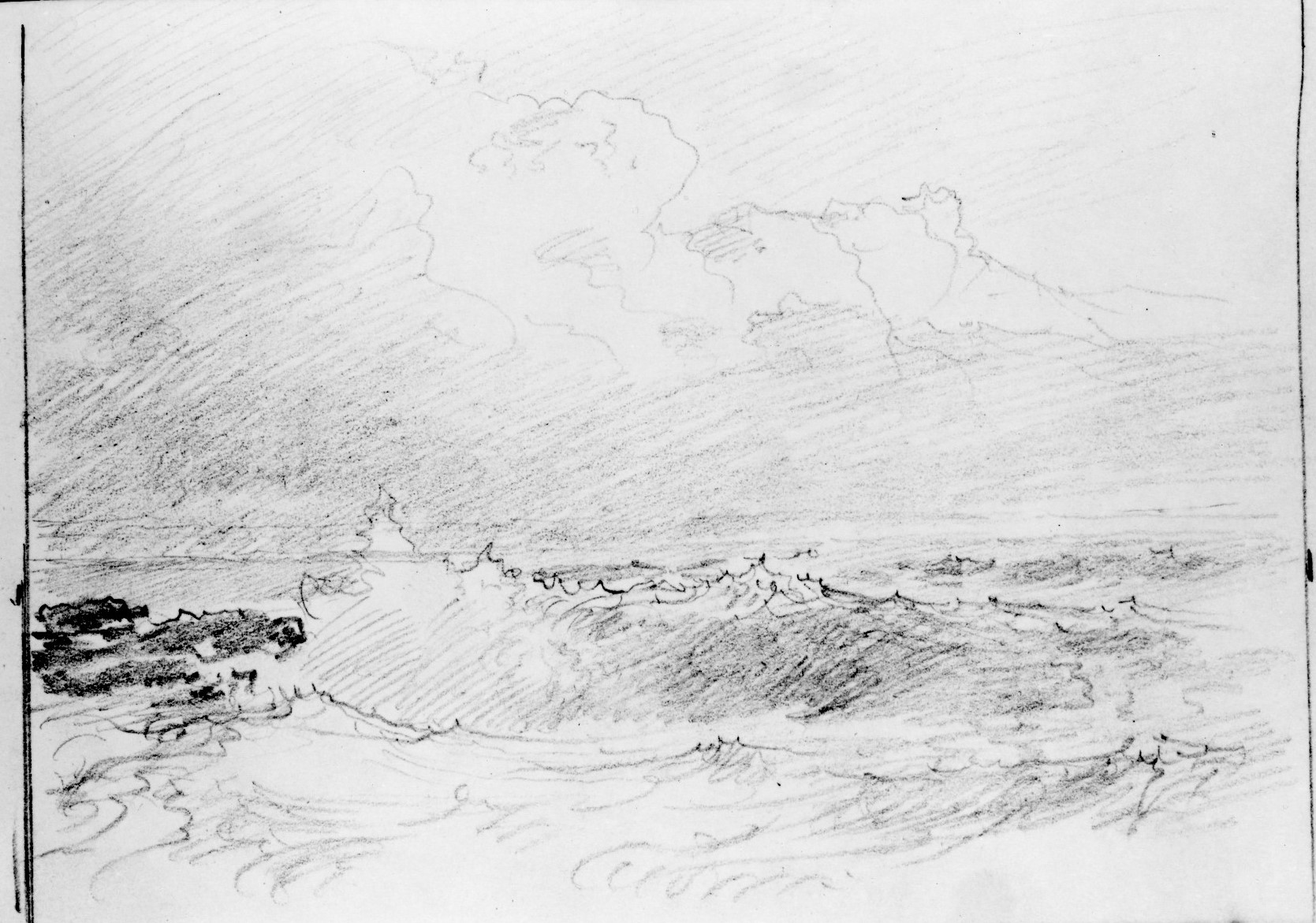
“He stood for hours[…] with arms folded, studying the motion of the sea until people thought him insane. After days of gazing, he made pencil notes of the action of the waves.”
Was it the duality of the sea that enthralled Richards, and so many others? The seemingly peaceful lapping at the shore, the mesmerizing sound of the water’s ebb and flow? While beneath the waves, beneath the foamy crests, there lay depths untouched by man, filled with creatures beyond our wildest dreams, and a tidal power so tremendous it holds the ability to turn from delicate to deadly in just one moment.
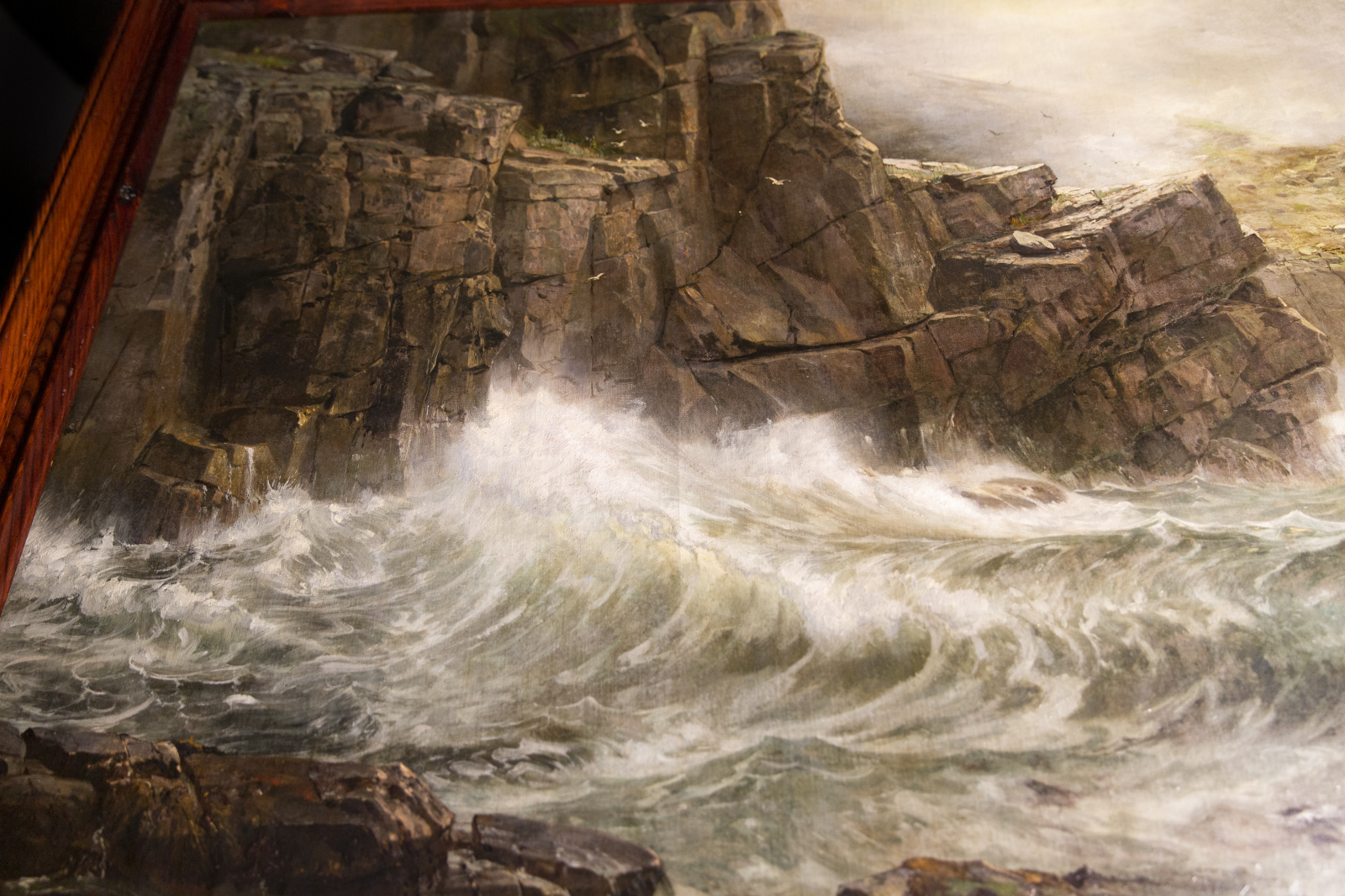
Our Connective Force
The realism, near hyper-realism, with which Richards has depicted this moment harkens back to that pull, that inexplicable force. You see, we’re connected through this work, you, me and Richards – we’ve felt that magical allure of the water. Our life experiences shape the way we see, not just the world, but Art.
Yes, this work is of the Cornish coast and Richards and I share a love of these cliffs and these waves as many others have felt before us and will feel long after us. And our travels, our life experiences have led us to a fascination with this region, but as much as I love Cornwall, this magic is not unique to it, but rather to this place, any place where sea meets shore. And this work, too, is not exclusive to those who have been to Cornwall.
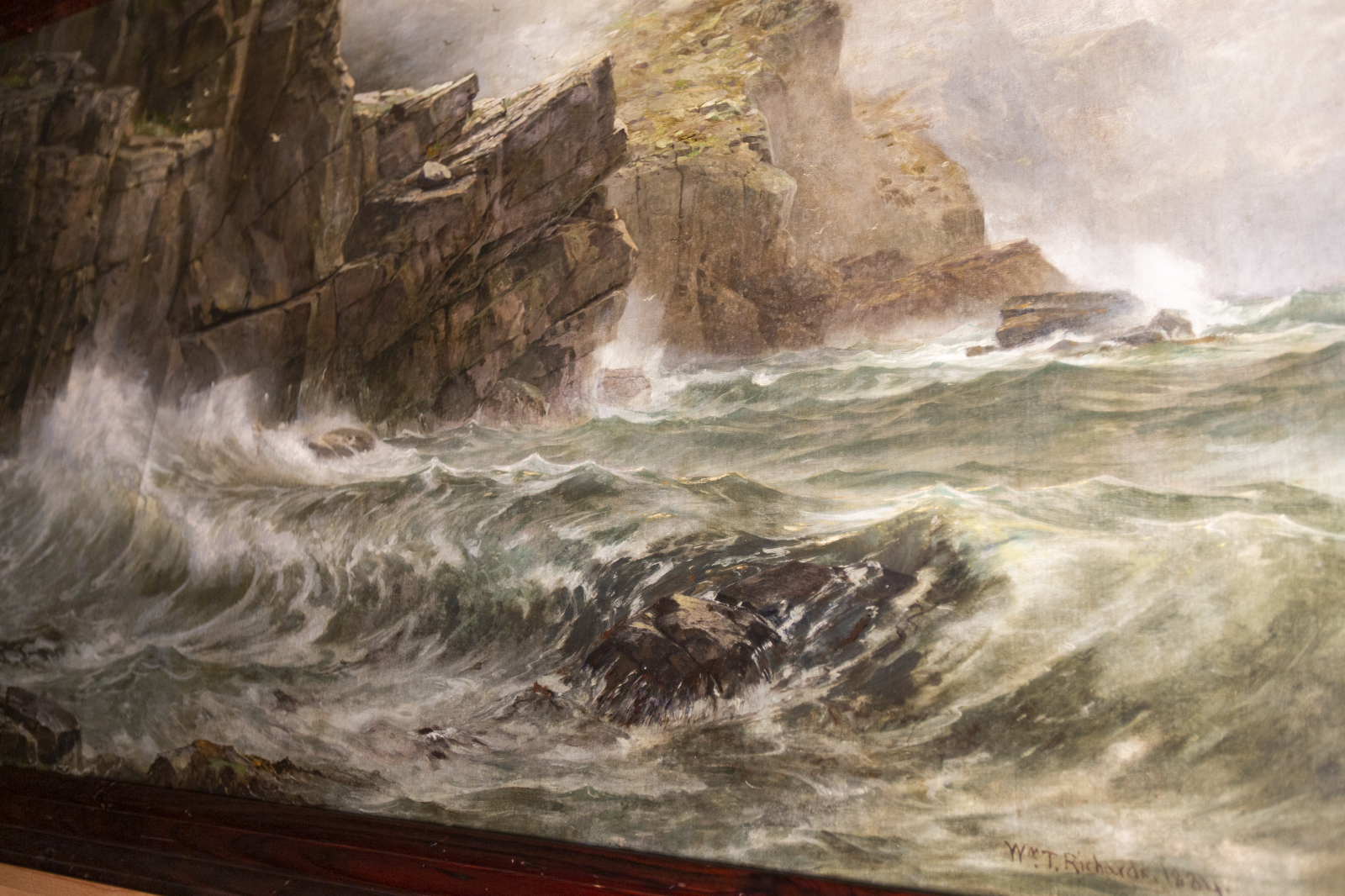
That golden glow just below the surface of the water, the foam that bubbles away on the rocks or the coast, are all imbued with that force that seems to pull us – it’s universal. It’s real, and we can all feel it. We as humans are drawn to the water and through that pull, we are connected.
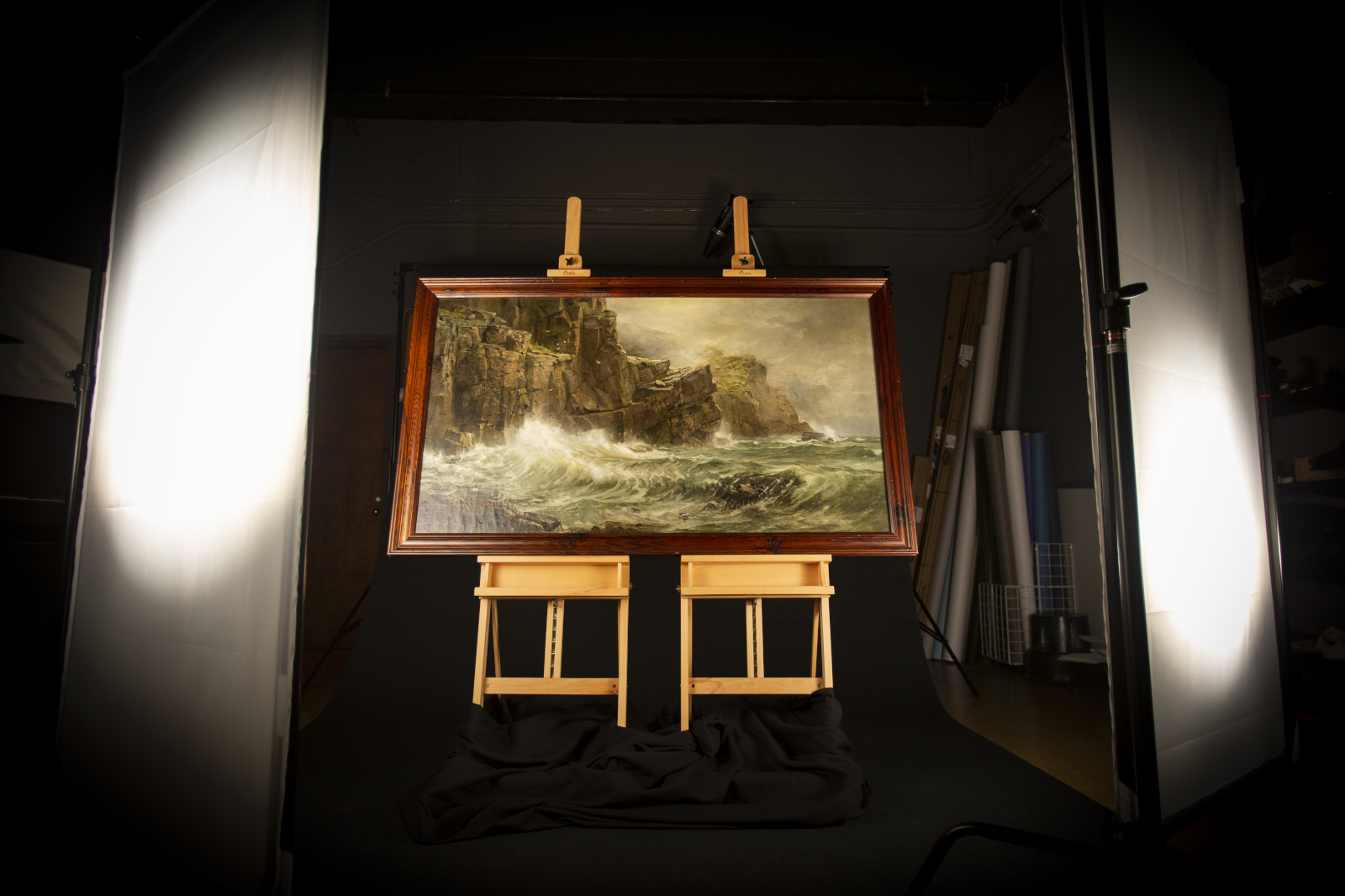
Watch the full episode YouTube!